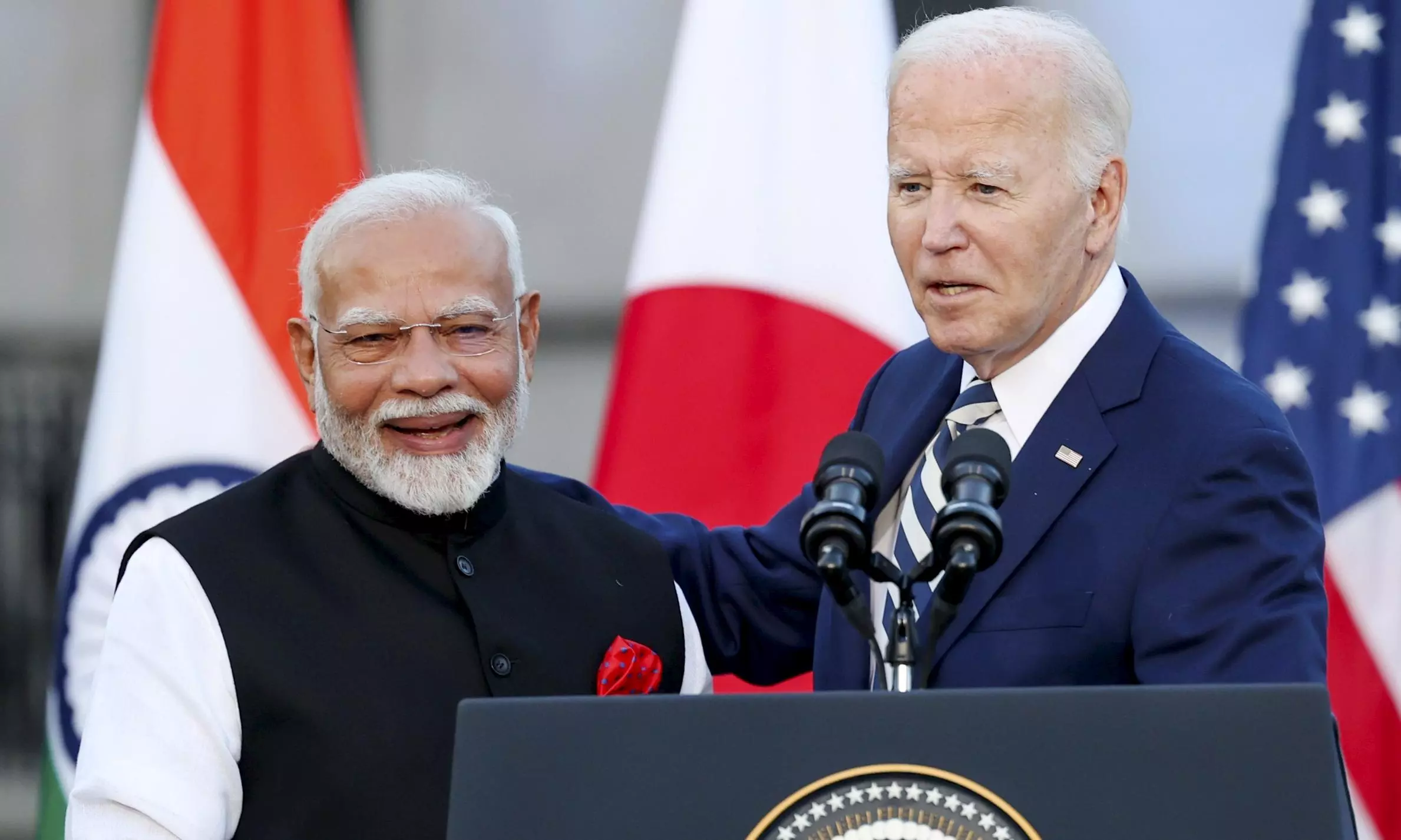
- Home
- India
- World
- Premium
- THE FEDERAL SPECIAL
- Analysis
- States
- Perspective
- Videos
- Sports
- Education
- Entertainment
- Elections
- Features
- Health
- Business
- Series
- In memoriam: Sheikh Mujibur Rahman
- Bishnoi's Men
- NEET TANGLE
- Economy Series
- Earth Day
- Kashmir’s Frozen Turbulence
- India@75
- The legend of Ramjanmabhoomi
- Liberalisation@30
- How to tame a dragon
- Celebrating biodiversity
- Farm Matters
- 50 days of solitude
- Bringing Migrants Home
- Budget 2020
- Jharkhand Votes
- The Federal Investigates
- The Federal Impact
- Vanishing Sand
- Gandhi @ 150
- Andhra Today
- Field report
- Operation Gulmarg
- Pandemic @1 Mn in India
- The Federal Year-End
- The Zero Year
- Science
- Brand studio
- Newsletter
- Elections 2024
- Events
- Home
- IndiaIndia
- World
- Analysis
- StatesStates
- PerspectivePerspective
- VideosVideos
- Sports
- Education
- Entertainment
- ElectionsElections
- Features
- Health
- BusinessBusiness
- Premium
- Loading...
Premium - Events

The India-US semiconductor pact will give India access to tech, but will it guard against future sanctions that disrupt such access?
Strategic partnership with the United States and India’s painstakingly nourished strategic autonomy need not be mutually exclusive undertakings but cannot have total overlap.
Can the chips manufactured under the proposed partnership – announced at Prime Minister Modi’s meeting with US President Joe Biden ahead of the Quad summit – be fitted onto the Brahmos missiles that are manufactured in India, in collaboration with Russia, and exported to several countries abroad? Would an American proscription of export of US-developed technology to targeted countries exclude technology products jointly developed with India under the proposed semiconductor collaboration?
Is there any guarantee that no Indian entity would figure in an American sanctions list?
On its terms
India needs US support, in the face of hostile designs by China on Indian territory. But India also needs the freedom to make its way in the world, dealing with other countries and powers on its own terms, unconstrained by pressure from or obligation to the US or any other power. India needs to buy oil from Russia, Iran or Venezuela, without that commercial transaction being hampered by American geopolitical requirements.
It needs to be able to buy missile defence systems from Russia and export its Brahmos missiles to Malaysia, the Philippines, or whoever else wants to buy a decent cruise missile and is not inimical to India’s interests. It needs to be able to pursue an ambitious space programme without rich countries asking why India would need climate funds when it can think of space conquest while a sizeable section of its own population is still poor.
Why do these questions come up in the context of chip manufacture in India with help from the US? They arise because the primary, if not the only, reason to fabricate chips in India, rather than buy them as and when required is to avoid being put in China’s place. The US has identified China as its strategic rival, and does not want American technology to add to China’s strategic muscle. So advanced semiconductors and equipment to manufacture advanced semiconductors have been barred for export to China, either by American firms or firms anywhere else that make use of US-derived technology.
If a situation arises, in which some strange constellation of events and circumstances dictates that India should be included in a sanctions list for export of sensitive American technology, even an India-based chip fabrication unit that makes use of American technology or equipment built using American technology would be constrained to not sell advanced microprocessors to Indian entities. If, at that time, India needs such advanced microprocessors for its missiles, but cannot obtain them, India’s national security would be compromised. It is to avoid such a situation that India needs to have indigenous capacity to produce chips. Having established chipmakers set up shop in India will not serve that purpose.
Can advanced semiconductors be fabricated without making use of American technology? China has demonstrated that it is possible. Chinese start-ups have produced the entire range of kit required to manufacture advanced semiconductors – chemicals, optical equipment to produce the lasers needed to etch nanometre-thin grooves on semiconductor wafers, deposit vaporized copper in the grooves to create the circuits, pack millions upon millions of transistors on a single chip and create the totally sanitized space within which to do all this without contaminants spoiling the end product.
Huawei has already shipped a phone with a seven-nanometer chip and is reported to be making a three-nanometer chip.
No taste for R&D
If Chinese companies can perform the needed research and development and produce what sanctions have denied Chinese companies, why can’t Indian companies?
True, traditional Indian companies have not demonstrated any taste for R&D. India, government and the private sector combined, spent 0.64 per cent of GDP on R&D, that figure being a tad higher than Gabon’s 0.60 per cent of GDP. South Korea spends 4 per cent of GDP on R&D. Big Tech and Big Pharma spend about 20 per cent of their turnover on R&D.
To expect established big Indian businesses to start spending on R&D is futile, although Jio does show some sign of a desire to do something new. Start-ups are a different story. The phase when Indian start-ups tried to replicate successful foreign business models, such as Uber’s or Amazon’s, is over. Some startups are doing serious innovation in space technology, medicine, and biosciences.
India's engineering talent
Instead of showering tens of billions of dollars on the world’s established semiconductor manufacturers to set up shop in India, as is required under the partnership programme India has signed on to with the US, New Delhi should use that money to fund clusters of start-ups, each cluster to work on each segment of the total ecosystem for chip manufacture.
India has talent—and not just to sing, dance, and perform acrobatic stunts. India has serious engineering talent, which the big companies of the world currently tap to innovate in their own businesses in their 1,600 global capacity centres located across India. The point is to tap this talent to produce the wherewithal to fortify India’s national security and strategic autonomy.
Trust our young engineers, and their faculty in their colleges, to innovate in India, and to make in India, instead of on the capacity of the stars to align to prevent partisan bunches of US Congressmen from placing sanctions on India, even as India relies on American technology for its key weapons systems.
(The Federal seeks to present views and opinions from all sides of the spectrum. The information, ideas or opinions in the articles are of the author and do not necessarily reflect the views of The Federal)


